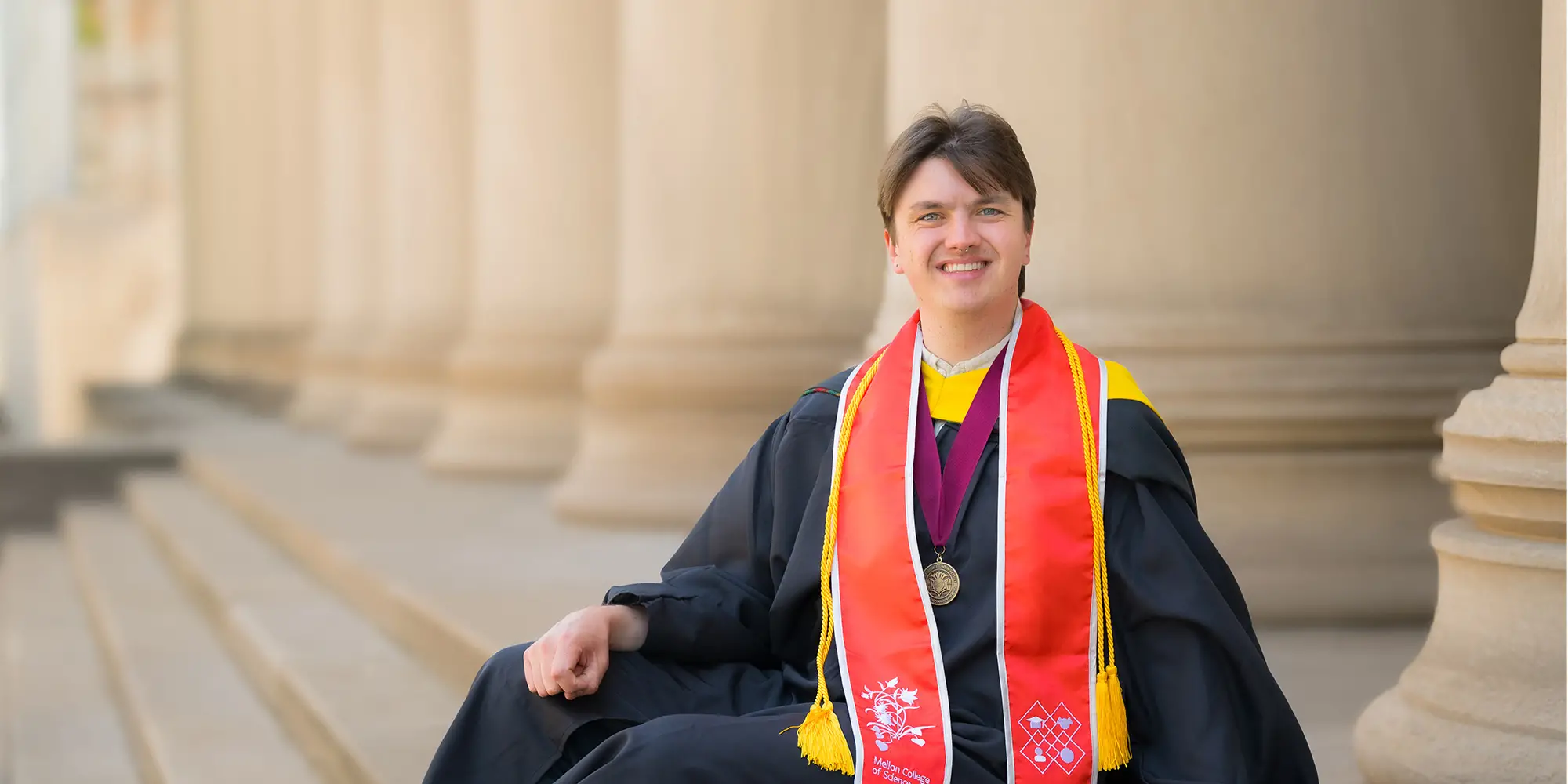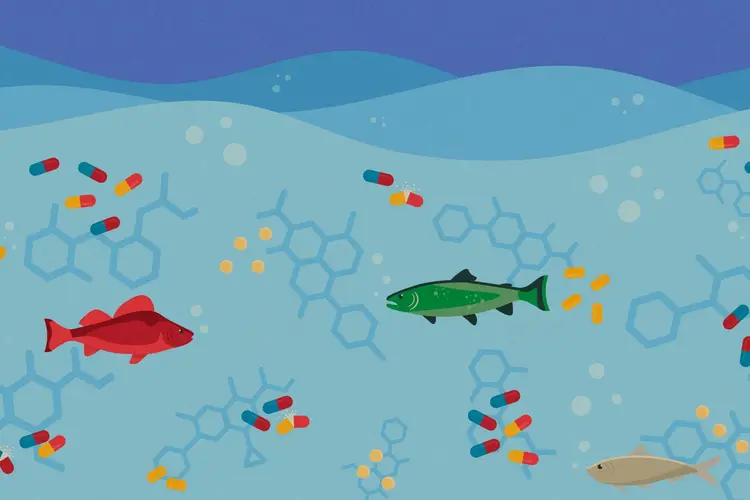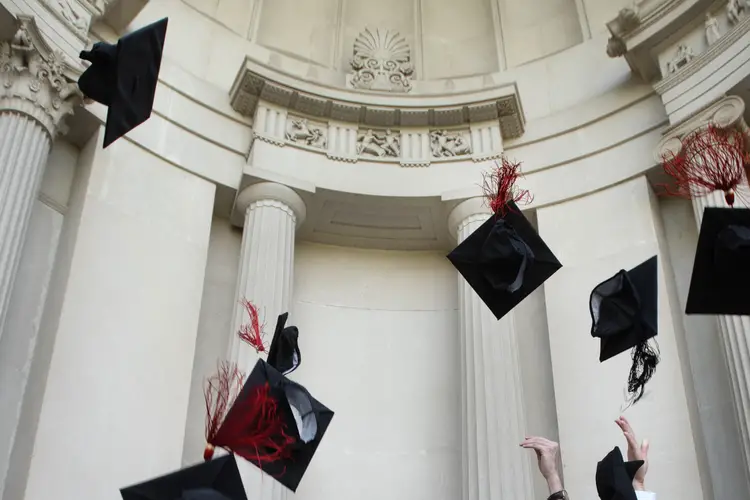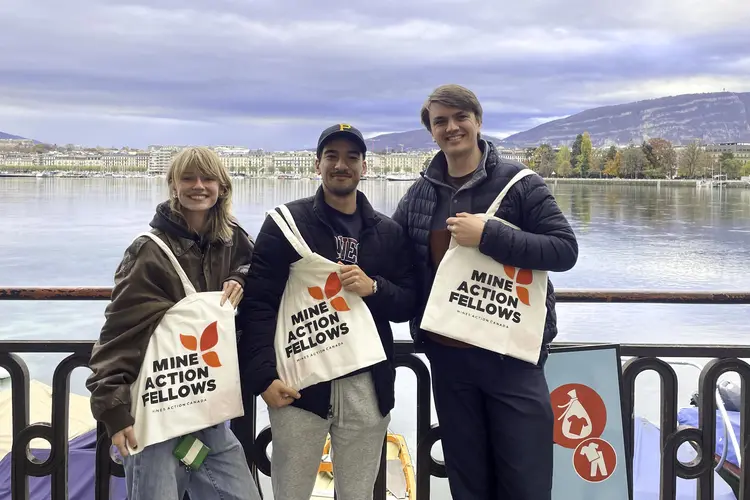
Researchers Target Tire Dust Threatening Salmon
Recent graduate Camden Johnson blends science, sustainability and education as he promotes waterway preservation
Media Inquiries
Scenic byways provide spectacular views of Puget Sound. That view comes with a cost; dust from vehicle tires washes into the sound posing a threat to salmon.
Carnegie Mellon University researchers, including recent graduate Camden Johnson, are investigating ways to safely remove these chemicals from waterways.
“The plastic pieces that come off get into the environment and have toxic effects on salmon and human health,” said Johnson, who graduated from the Honors B.S.-M.S. Program in Chemistry(opens in new window).
Tires have a plastic additive known as 6PPD, which prevents them from being exposed to ozone and cracking. As tires wear down, 6PPD reacts with ozone to form 6PPDq, a highly toxic compound that enters nearby rivers. At one part per trillion in a waterway, 6PPDq can induce an anxious state in salmon, leading to their deaths.
“Another concerning effect is the potential long-term damage to salmon populations or intergenerational toxic effects that are passed down to their offspring,” Johnson said. “That hasn’t been studied in a lot of depth since 6PPDq is a relatively new compound of concern.”
To learn more about 6PPDq, Johnson worked with Terry Collins(opens in new window), Teresa Heinz Professor in Green Chemistry and chemistry director of the Institute for Green Science(opens in new window); and Carrie McDonough(opens in new window), assistant professor of chemistry.
In the Collins lab, Johnson helped to investigate if a class of catalysts known as TAMLs could safely remove 6PPD and 6PPDq from wastewater.
“Camden Johnson is the type of remarkable, creatively thinking, young scientist and broadminded scholar that sustainability leadership is calling for today,” Collins said. “He is intellectually gifted in ways that will allow him to compete successfully in the most demanding chemical science education and research environments.”
In the McDonough lab, Johnson analyzed if the intermediate steps of the chemical reaction were safe. If these steps are safe, the researchers are interested seeing if they can expand the reaction for use on a larger scale.
“It has been such a pleasure to work with Camden,” McDonough said. “He’s adapted his own analytical methods using this advanced instrumentation. I’m sure the skills he’s developed while at CMU will serve him well in his career, and I’m confident his future work will aid in solving the complex environmental problems that face us today.”
Johnson also promotes the protection of waterways through outreach. Working with the Watersmith Guild, a nonprofit that inspires watershed conservation through programs and education, he helped found Aqua Lab Adventures(opens in new window), a free program that introduces middle schoolers in Pittsburgh area schools to sustainability. Students learn about microplastics — pieces of plastic 5 millimeters or smaller that do not degrade in the environment — then visit a lake to use a paddleboard, collect and analyze microplastics, and create a short film.
“The kids are always really excited, and we try to channel their excitement into places for them to build a sense of confidence and to build a STEM identity, where they identify with aspects of science and the environment,” Johnson said.
Johnson will continue his work in sustainability as a part of research and development at Sudoc(opens in new window). The startup, created by Collins, formulates safe alternatives to toxic chemicals and reduce the amount of toxic chemicals in the environment.
“I like knowing that the research I’m doing can be applied directly to solve environmental and social problems,” Johnson said.
For his efforts, Camden Johnson earned the Mellon College of Science Gilman Award, which honors a graduating senior who has demonstrated exceptional commitment and growth as a scholar, person, professional and citizen during their time at Carnegie Mellon.


